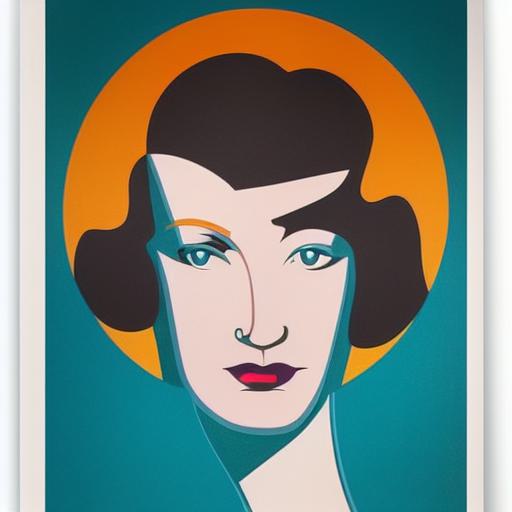Art Deco
Art Deco is a design style that was popular during the 1920s and 1930s, characterized by its geometric shapes, bold colors, and stylized forms. Art Deco prints are patterns that feature these elements, often incorporating motifs such as zigzags, sunbursts, and stylized florals.
Art Deco prints were used in a wide range of applications, including architecture, furniture, textiles, and fashion. They were often seen in high-end luxury goods, as the style was associated with glamour and sophistication.
Popularity of art deco
Today, Art Deco prints are still popular in interior design, fashion, and graphic design. They are often used to create a bold, striking look, and can be combined with other patterns or used as a statement piece on their own.
Origin of art deco
Art Deco prints were inspired by a variety of sources, including ancient Egyptian art, Cubism, and Futurism. The style is characterized by its use of geometric shapes, such as triangles, circles, and squares, which are often arranged in symmetrical patterns.
Color played a significant role in Art Deco prints, with bold, saturated hues such as deep blues, emerald greens, and rich purples being popular choices. Metallics such as gold, silver, and bronze were also frequently used to add a sense of luxury and opulence to the designs.
Art Deco prints were used in a variety of applications, including wallpaper, textiles, ceramics, and glassware. They were also commonly used in advertising, with posters featuring stylized illustrations and bold typography.
Use of AI-generated art
AI-generated art refers to artwork that is created through the use of artificial intelligence algorithms, allowing for fast and efficient production of images. This technique offers many advantages over traditional methods of art-making, including the ability to experiment with different styles and techniques, as well as the flexibility to create designs that meet specific requirements. In addition to these benefits, AI-generated art promotes diversity and inclusivity within the art world by providing a platform for artists from various backgrounds to express their unique experiences and perspectives.
Designers can easily incorporate AI-generated art into their projects by utilizing online tools like Visual Paradigm Online. Websites such as Stable Diffusion, Midjourney, or Dalle 2 also offer artists the opportunity to generate their own AI-generated art and explore the virtually limitless creative possibilities that this technology provides.
How to create this prompt?
The prompt starts with the description of an “art deco poster with a woman’s face”. This is a specific visual cue that tells the AI model to generate an image that looks like an Art Deco poster, which is a type of poster that was popular in the 1920s and 1930s. The image should also include a woman’s face as a prominent feature, which is a common motif in Art Deco design.
The next part of the prompt describes an “art deco painting by Fred Cress”. Fred Cress was an Australian artist who was known for his Art Deco-inspired paintings, so including his name in the prompt gives the AI model more specific information about the type of Art Deco style that the image should be modeled after.
The prompt also includes a reference to “pixabay”, which is a website that provides free stock images. This part of the prompt tells the AI model that it can use images from the Pixabay website as a reference for creating the Art Deco poster and painting.
The prompt repeats the phrase “art deco” several times, which reinforces the style that the AI model should be aiming for. This repetition helps to narrow the focus of the prompt and ensures that the image that is generated has a consistent Art Deco aesthetic.
The final part of the prompt includes the words “portrait” and “poster”. These terms give the AI model more specific information about the type of image that should be generated.
Overall, the prompt is designed to give the AI model clear and specific instructions for generating an Art Deco-inspired image that includes a woman’s face. By including references to specific artists and websites, as well as descriptive terms such as “portrait” and “poster”, the prompt provides the AI model with the information it needs to create a visually appealing and stylistically consistent image.


